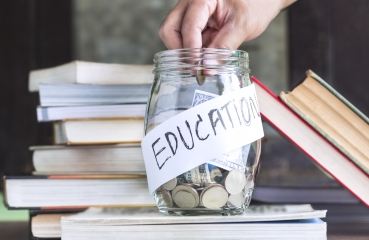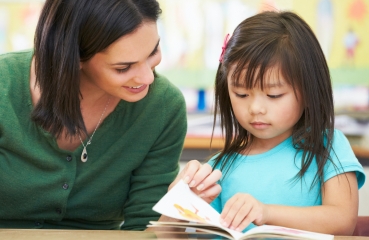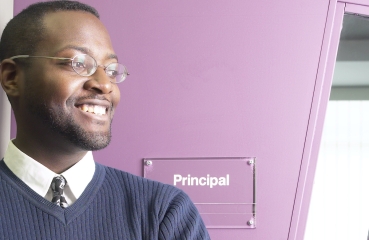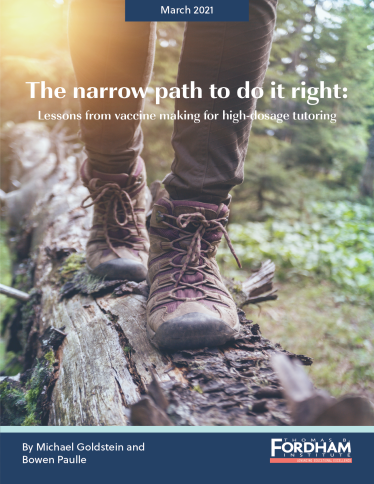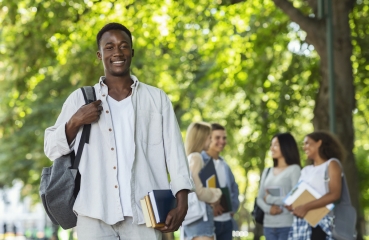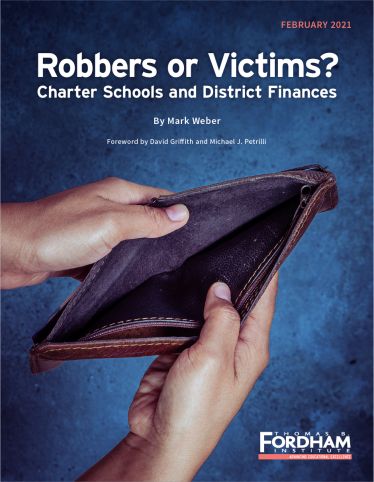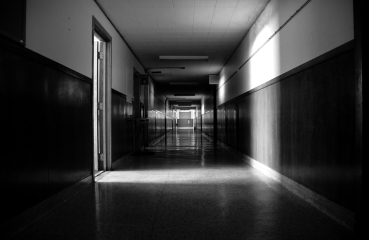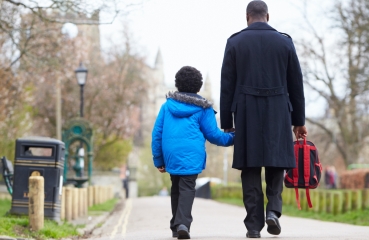A different K–12 world: Teens and parents on Covid-19 shock and schools
Bruno V. MannoIn the song “Ballad of a Thin Man,” Nobel Laureate Bob Dylan penned an iconic refrain that asks: “But something is happening/And ya’ don’t know what it is/Do you, Mister Jones?” That refrain seems an apt way to describe what K–12 education stakeholders are sensing as they reel in response to Covid-19 shock.
Reduce class sizes, lengthen the school year, provide tutoring—or let principals decide?
Marguerite Roza, Chad AldemanDistrict leaders may be celebrating the $122 billion in stimulus relief Congress approved for K–12 schools last month.
Best- and worst-case scenarios for how school stimulus dollars will be spent
Chad AldemanIn the last year, Congress has now invested nearly $200 billion to support K–12 education. It’s an unprecedented federal infusion of money, but will it lead to an unprecedented recovery effort? It’s worth taking a moment to pause and consider the range of possibilities. Best case
Our full rebuttal to a flawed critique of “Robbers or Victims? Charter Schools and District Finances”
Earlier this month on her “Answer Sheet” blog in the Washington Post, Valerie Strauss ran a lengthy rebuttal written by Carol Burris about a study that we recently published. Robbers or Victims?
How districts and charter networks can best address unfinished learning
Michael J. PetrilliFordham’s new resource, “The Acceleration Imperative,” aims to give the nation’s chief academic officers a head start on planning for America’s educational recovery, with a focus on high-poverty elementary schools. It’s intentionally a work in progress, and already the product of thoughtful advice from more than three dozen experts. The intention is for it to continue evolving and improving with readers’ help, via a “crowdsourced” initiative on a new wiki site.
The stimulus package won’t fix schools’ employee-benefit problem
Brandon L. WrightEditor’s note: This is the second post in a series that puts the themes of 2020’s Getting the Most Bang for the Education Buck into today’s context, with particular attention to the effects of the pandemic and federal relief dollars.
The role of out-of-school supports in boosting academic outcomes
Amber M. Northern, Ph.D., Jeff MurrayStructured activities and services provided outside of the regular school day were increasingly the focus of public investment in the U.S. prior to the coronavirus pandemic.
A challenging funding future for schools—made worse by the pandemic
Brandon L. WrightEditor’s note: This is the first post in a series that puts the themes of 2020’s Getting the Most Bang for the Education Buck into today’s context, with particular attention to the effects of the pandemic and federal relief dollars.
Beware the calls for post-Covid innovation
Dale ChuNow that Uncle Sam’s check is in the mail, one of the biggest hopes for schools is that they will be able to leverage the massive infusion of cash to be more creative, imaginative, and innovative.
Addressing learning loss in one easy lesson
Robert PondiscioOne of the best-selling education books of the Covid era is one you’ve probably never read and maybe never even heard of. Teach Your Child to Read in 100 Easy Lessons was written nearly forty years ago by Siegfried Engelmann, who passed away in 2019.
The principal effect: How school leaders affect students and schools
Victoria McDougaldResearch and common sense suggest that teachers are the biggest school-based factor influencing student learning.
The narrow path to do it right: Lessons from vaccine making for high-dosage tutoring
Mike Goldstein, Bowen PaulleHigh-dosage tutoring is receiving a lot of buzz as a promising tool to address learning loss in the wake of the Covid-19 pandemic. But unlike vaccines, successful tutoring programs are challenging to scale with fidelity. In this paper, long-time educators Michael Goldstein and Bowen Paulle explain how leaders can smartly scale promising tutoring programs that can boost student outcomes.
Personalized learning for the wee ones in the wake of the pandemic, Part I
Michael J. PetrilliEditor’s note: This is the fourth in a series of posts about envelope-pushing strategies that schools might embrace to address students’ learning loss in the wake of the pandemic.
Digging deeply into the data on school turnarounds
Olivia PiontekStates embraced school turnaround efforts in the wake of the No Child Left Behind (NCLB) Act in the early 2000s. These took various forms at first, as each state pursued their own turnaround strategies per NCLB’s requirements.
Charter school growth increases resources in district-run schools
Patrick WolfEducation funding is sticky. Once dollars are sent to a public school or school system, they tend to stay there.
Assessing the value of community college credentials
Amber M. Northern, Ph.D.The return on investment for four-year college degrees is fairly well-established in terms of graduates’ employment and
Gen Z and Millennials are bullish on their futures and critical about today’s schools
Bruno V. MannoGeneration Z and Millennials are optimistic about their future and confident it will be filled with opportunity, despite the pandemic and other problems they face. Two in three (67 percent) believe they “have the opportunity to achieve the American dream,” with more than one in two (56 percent) saying “all people in my generation” can achieve it.
Are classroom instructional materials meeting the needs of English learners?
Julie FitzBack in May 2020, The U.S. Department of Education had to issue guidance clarifying that, yes, schools and districts were still required to provide language instruction services for English learners (EL) during remote learning.
How schools should spend federal Covid-19 aid
Brandon L. WrightWith two big rounds of Covid-19 aid having been sent to schools and at least a third on the horizon, leaders must make difficult decisions, especially as more schools reopen and the pandemic rages on. How can they use this money to best mitigate risk, facilitate effective hybrid learning, and most importantly, get kids back on track after suffering substantial learning losses?
Massive student loan forgiveness would be a lost opportunity to help needy Americans
Michael J. PetrilliIt’s not surprising that most of the arguments against widespread student loan forgiveness are coming from the political right, given that the idea itself gained prominence during the 2020 presidential campaigns of Senators Bernie Sander
Literacy is equity
Robert PondiscioAny discussion about “equity” in education that is not first and foremost a discussion about literacy is unserious.
How much does student motivation affect student outcomes?
Adam Tyner, Ph.D.Why do some students succeed and others lag behind? This is, of course, a central question in education policy.
Are charter schools a drain on district finances?
David Griffith, Michael J. PetrilliShould President Biden follow through on his campaign promise to grant local school districts veto power over the creation of new charter schools within their borders, on the assumption that their expansion harms traditional public schools?
Robbers or Victims? Charter Schools and District Finances
Mark WeberOpponents of charters contend that they drain district coffers, while proponents argue that it is charters that are denied essential funding. Yet too often, the claims made by both sides of this debate have been based on assumptions rather than hard evidence.
How ya gonna keep ‘em back in that old school?
Chester E. Finn, Jr.If the pandemic vanished tomorrow and all U.S. schools instantly reopened in exactly the same fashion as they were operating last February, how many parents would be satisfied to return their daughters and sons to the same old familiar classrooms, teachers, schedules and curricula? A lot fewer than the same old schools and those who run and teach in them are expecting back!
How anger over Covid closures can fuel the school choice movement
Robert PondiscioThe father testifying before Virginia’s Loudon County school board
Predicting students’ academic trajectory from third grade test scores
Olivia PiontekThanks to the No Child Left Behind Act, annual testing in math and reading for students in grades three through eight became mandatory in every state beginning in 2005.
Merit aid and college outcomes
Amber M. Northern, Ph.D.For many years, the Susan Thompson Buffett Foundation (STBF) in Nebraska has provided full-ride college scholarships to eligible high school graduates in the state. This randomized study examines how such largesse affects higher education enrollment and degree completion.
The pandemic dims a beacon of school improvement
Josh BootsFor the past decade, Washington, D.C., schools have shone as a success story, with achievement for all students rising steadily in elementary and middle schools and more quickly than the national average.
